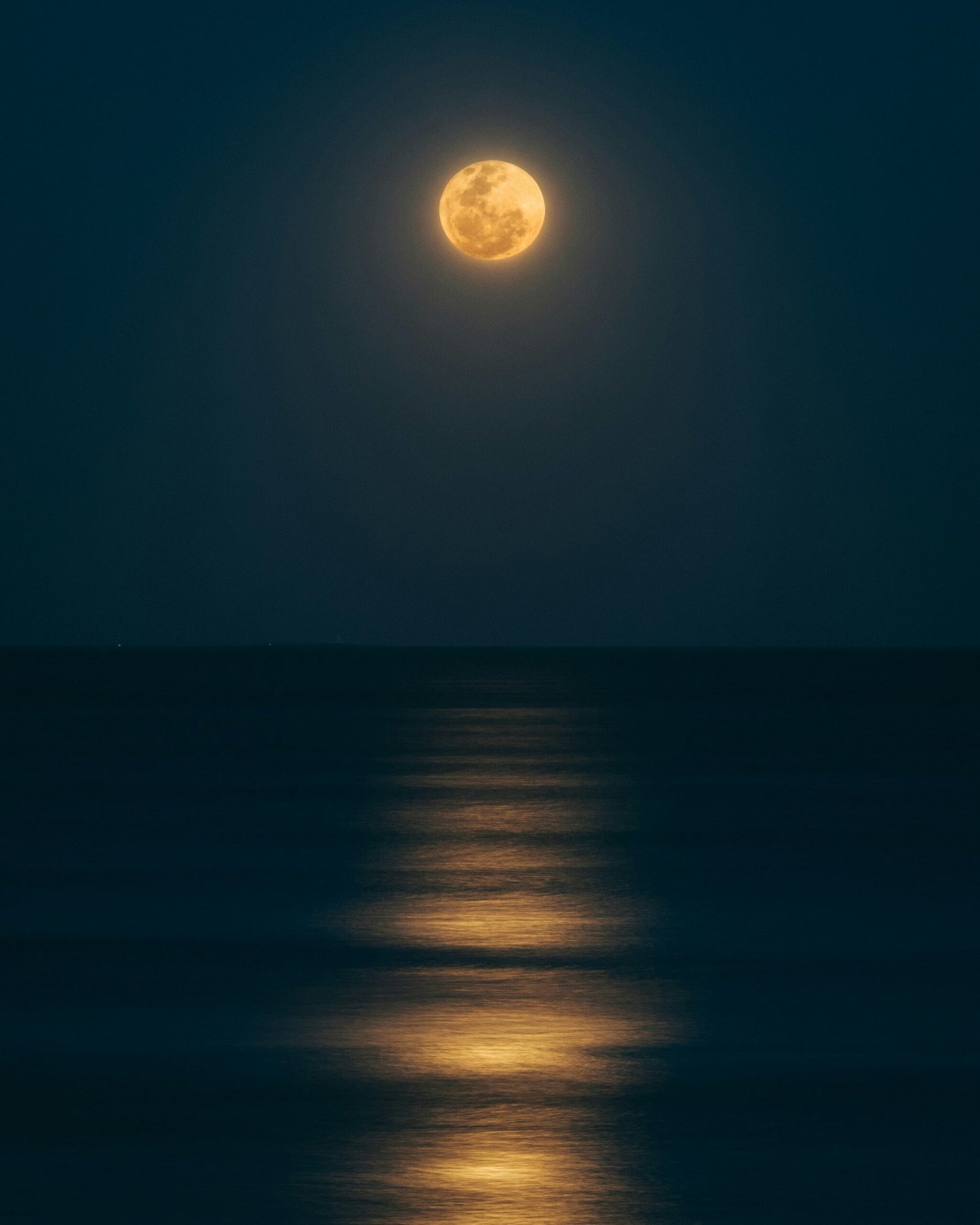
Introduction to the Full Moon
The full moon, a striking celestial event, is the phase of the lunar cycle when the moon is fully illuminated by the sun’s light. Occurring approximately every 29.5 days, this event has captivated humans for centuries, prompting admiration for its beauty and fostering numerous cultural associations. Each month, as the moon transitions from a new moon to a full moon, observers around the world prepare to witness its enchanting glow—a phenomenon that carries significant meaning across various civilizations.
Many cultures have celebrated the full moon through rituals, festivals, and folklore. For instance, in ancient cultures, the full moon often symbolized abundance, fertility, and enlightenment. In contrast, other societies viewed it as a time for reflection and inner peace, harnessing its luminous presence to guide meditation practices. The full moon remains a significant aspect of cultural traditions, inspiring music, literature, and art, as well as evoking a sense of nostalgia, spiritual connection, and emotional depth.


The aesthetics of the full moon are further heightened by its unique features. Its round, silvery-white visage contrasts beautifully against the dark night sky, providing a breathtaking backdrop for evening gatherings or solitary moments of contemplation. The diverse landscapes in which the full moon appears can dramatically influence its perceived beauty, whether it rises over serene ocean waters, rises behind mountain silhouettes, or bathes urban skylines in its ethereal light. Observers often report feelings of tranquility and wonder when gazing at the full moon, as it serves as a reminder of the vast universe beyond our immediate reality.
This introduction sets the stage for exploring the full moon’s aesthetic appeal, inviting a deeper examination of its impact on human emotions and artistic expression.




Cultural Significance of the Full Moon
The full moon has held a prominent place in the cultural and historical narratives of societies across the globe. Various cultures view the full moon as a symbol of life, fertility, and enlightenment, contributing to its enduring aesthetic appeal. In ancient civilizations, from the Egyptians to the Chinese, the full moon was often linked to gods and celestial beings, illustrating a deep connection between humanity and the cosmos.
In mythology, the full moon frequently appears as a central figure, influencing tales that blend nature with the supernatural. For instance, in Greek mythology, Artemis, the goddess of the moon, symbolizes the duality of the light and dark aspects of nature, often represented in the full moon’s illuminating presence during the night. Similarly, in Hindu culture, the full moon is celebrated during the festival of Sharad Purnima, which marks the harvest and evokes rituals that emphasize gratitude and abundance.



Folklore, too, is rich with legends associated with the full moon. Many societies have created stories around the notion that the full moon affects human behavior, leading to terms such as “lunacy,” derived from “luna,” the Latin word for moon. In rural communities, the full moon was often a critical time for agricultural activities, inspiring seasonal festivals to celebrate the harvest, showcasing both reverence for the lunar cycles and a communal appreciation for nature’s rhythms.
Festivals centered on the full moon, such as the Mid-Autumn Festival in China and La Tomatina in Spain, not only focus on lunar observations but also foster social unity and festive joy. The aesthetic beauty of the full moon enhances these celebrations, as participants gather beneath its luminous glow, carving moments of togetherness. Thus, the cultural significance of the full moon transcends mere observation, embedding itself into the fabric of human tradition and lending a sense of wonder that continues to inspire throughout generations.
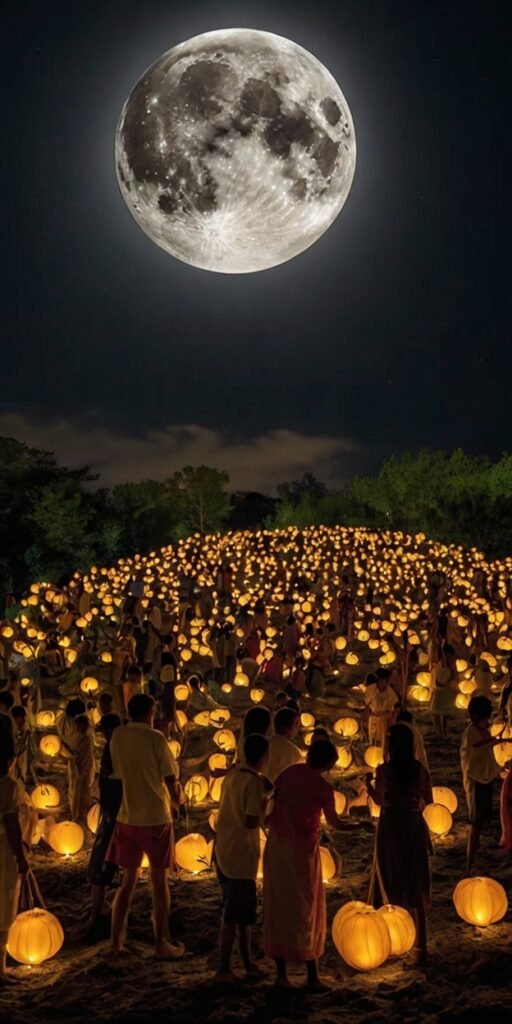
Visual Beauty of the Full Moon
The full moon presents a remarkable visual spectacle that has captivated observers for centuries. Its size appears magnified, often dominating the night sky, providing a stunning focal point that draws the attention of sky-gazers. When it is at its fullest, the moon’s luminescence creates a breathtaking glow that bathes landscapes and cityscapes alike in a soft, silvery light. This illumination enhances the natural beauty of the surroundings, leaving a lasting impression on those fortunate enough to witness it.
One of the most enchanting attributes of the full moon is its color variations. Depending on atmospheric conditions, the full moon can appear in various hues, ranging from a warm, amber glow during moonrise to a crisp, pale white when it is at its zenith. Sometimes, it might even take on a subtle golden shimmer, reminiscent of a jewel dangling against the deep velvet of the night sky. The interplay of moonlight and environmental factors, such as clouds and humidity, further contributes to the captivating visual experience.
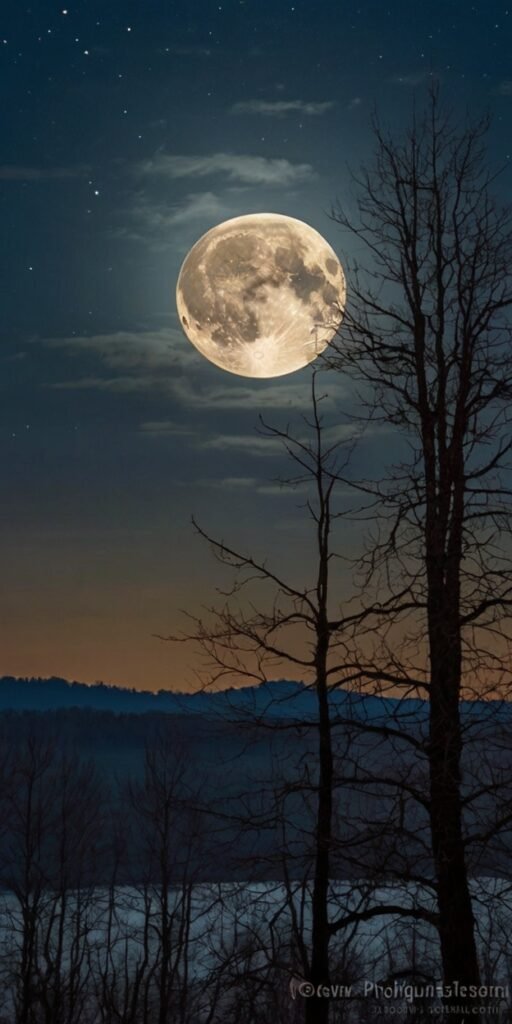
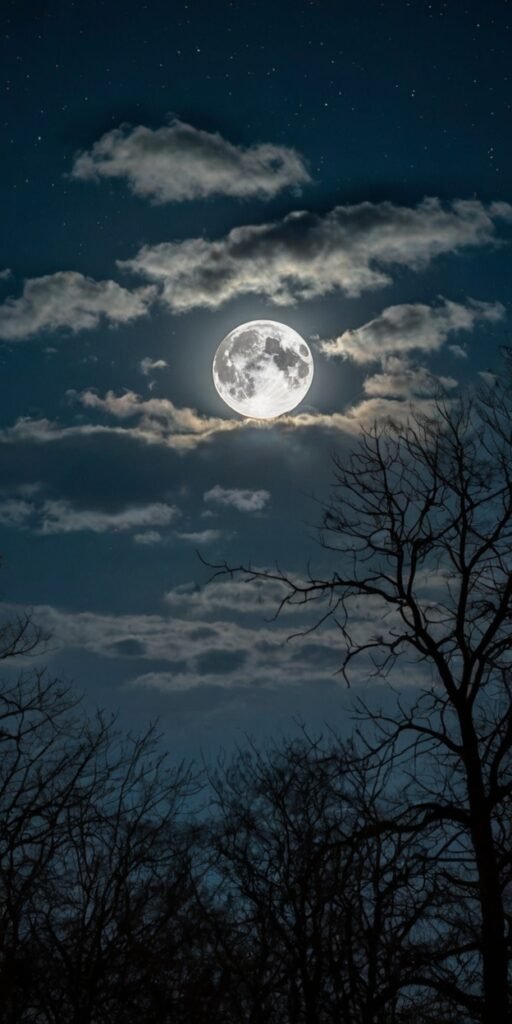
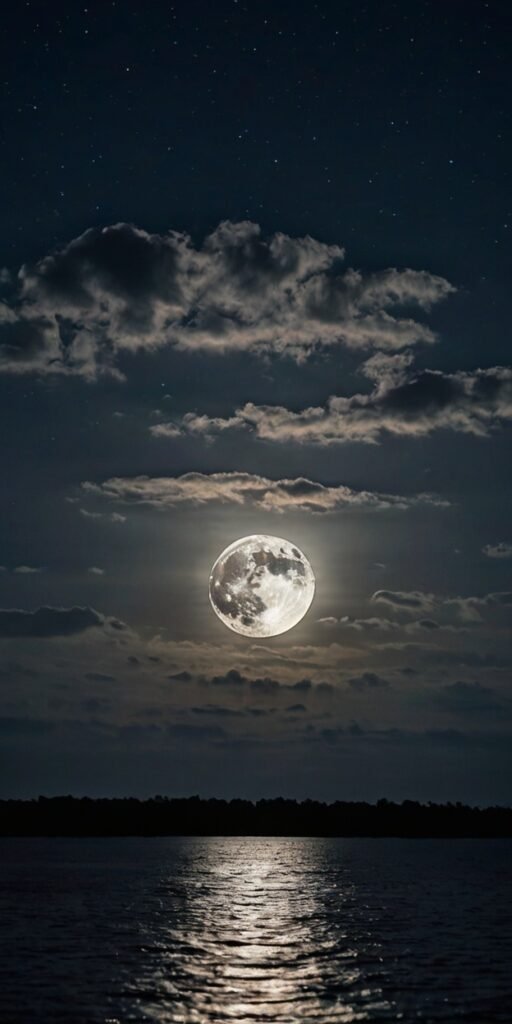
The full moon also evokes a sense of grandeur and elegance, often described as a celestial ornament suspended in the vast expanse of the universe. Its ethereal appearance can instill feelings of wonder and reflection, inspiring poets, artists, and dreamers to channel its beauty into their work. Interestingly, many cultures incorporate the full moon into their traditions and festivities, sometimes symbolizing renewal, fertility, and abundance, which underscores its importance across different societies.
In this way, the full moon stands not only as a natural satellite but also as a beacon of aesthetic beauty, influencing perceptions and allowing humanity to reconnect with nature. Its visual attributes, combined with the emotions it invokes, ensure that the full moon continues to enchant anyone who pauses to admire its splendor.




The Moon’s Influence on Nature
The full moon exerts a significant influence on various natural phenomena, most notably the ocean tides. As the Earth, moon, and sun align, the gravitational pull of the moon causes the water levels in the oceans to rise and fall in a predictable rhythm, producing high and low tides. This phenomenon is not only a fascinating display of celestial mechanics but also plays a crucial role in maintaining the ecological balance of marine ecosystems. The interaction between the moon and the oceans thus contributes to the aesthetic beauty of our planet while reaffirming the moon’s enduring connection with natural cycles.
In addition to tidal changes, the full moon impacts terrestrial ecosystems, particularly through animal behavior. Numerous species, from insects to mammals, exhibit behaviors that are closely tied to the lunar cycle. For example, certain fish are known to spawn during the days surrounding the full moon, taking advantage of the increased light and tidal shifts to optimize the survival rates of their offspring. Additionally, various terrestrial animals, including predators and prey alike, often adjust their activities based on the moon’s brightness and position in the sky. This synchronization with lunar phases highlights the profound link between the full moon and the natural rhythms that govern life on Earth.


The interplay between the full moon and natural phenomena not only enhances the aesthetic appeal of the night sky but also serves as a reminder of our integral connection to nature. Observing how the full moon influences tides and animal behaviors can enrich our appreciation of the beauty that surrounds us and the intricate web of life that flourishes under its gentle glow. As we reflect on the full moon’s captivating presence, we are invited to recognize the larger rhythms of nature and the balance that sustains our ecosystem.
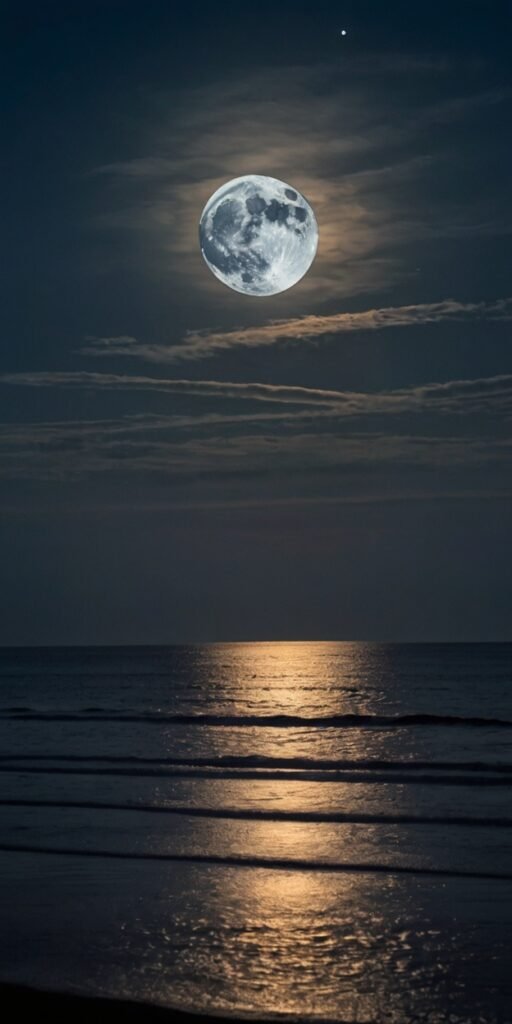



Artistic Representations of the Full Moon
The full moon has long captivated the artistic imagination, serving as a timeless symbol in various forms of creative expression. From paintings to poetry and music, artists and writers have been inspired by its luminous beauty and profound symbolism. This celestial phenomenon not only evokes emotion but also serves as a muse that enhances the depth and richness of artistic endeavors.
In the realm of visual arts, renowned painters such as Vincent van Gogh have immortalized the full moon in their works. Van Gogh’s “Starry Night” vividly depicts a swirling night sky, with the moon radiating a calming light over a quiet village, illustrating how the moonlight can evoke serenity and introspection. Similarly, the romantic painter Caspar David Friedrich often explored themes of solitude and contemplation in his works featuring the full moon, showcasing its ability to inspire complex emotional landscapes.



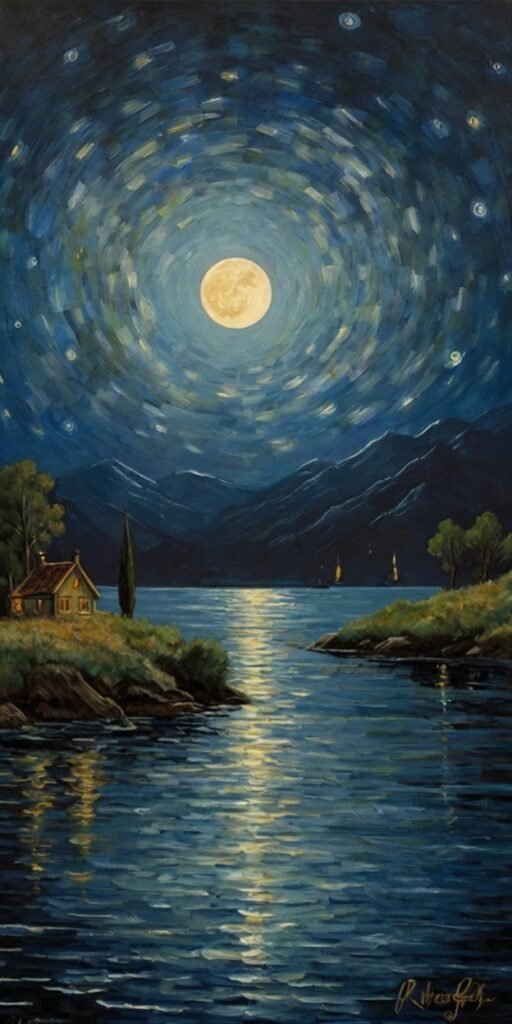
In literature, the full moon has been a recurring motif in poetry, conveying themes of love, loss, and longing. Poets like John Keats, in his piece “The Eve of St. Agnes,” harnessed the full moon’s ethereal glow as a backdrop for romantic encounters and dreams, thus highlighting its role in human experience. The moon has also been portrayed in folklore and myth, often represented as an enchanting figure that influences the human psyche, guiding actions and emotions in subtle yet profound ways.
Musically, the full moon has inspired countless compositions across genres. For instance, Beethoven’s “Moonlight Sonata” captures the enchanting quality of the moonlight, underscoring the full moon’s influence on mood and ambiance. Similarly, contemporary musicians draw upon the full moon’s allure to evoke feelings of nostalgia and wonder, demonstrating that the celestial object remains a significant source of inspiration in the evolving landscape of artistic expression.




Photography: Capturing the Full Moon
The full moon serves as a captivating subject for photographers, offering a unique blend of beauty and challenge. Capturing its ethereal glow requires a combination of technical skill and artistic vision. Understanding the essentials of moon photography can elevate any amateur photographer’s portfolio and deepen one’s appreciation for this celestial phenomenon. One of the primary considerations is timing; knowing when the full moon rises and sets can significantly impact the quality of your photograph. The best results often occur during twilight, when the sky presents a stunning gradient of colors, contrasting beautifully with the bright orb.
When preparing for a full moon shoot, selecting the right equipment is crucial. A camera equipped with a telephoto lens is recommended, as it allows for greater magnification and detail. A focal length of around 200mm or more will enable photographers to capture the moon’s surface texture, including craters and mountains. Additionally, a sturdy tripod can stabilize long exposure shots, minimizing the risk of blurriness caused by camera shake. Proper camera settings are equally important; using a low ISO will help reduce noise, while a fast shutter speed can prevent overexposure that often occurs when photographing the moon.




Challenges abound when photographing the full moon, including its brightness and positioning in the sky. It can be beneficial to practice “moonrise” shots, where the moon is close to the horizon, allowing for exciting perspectives with foreground elements such as trees or buildings. Moreover, editing techniques can further enhance the final image, helping to bring out colors and details that might be lost in initial shots. By experimenting with various angles, compositions, and camera settings, photographers can better capture the majestic beauty of the full moon, inviting viewers to share in the awe of this celestial spectacle.

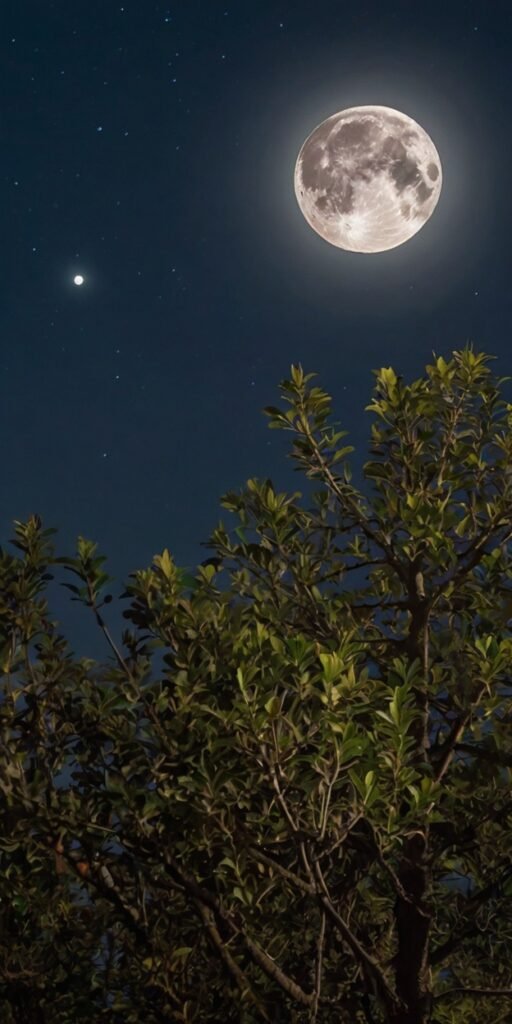
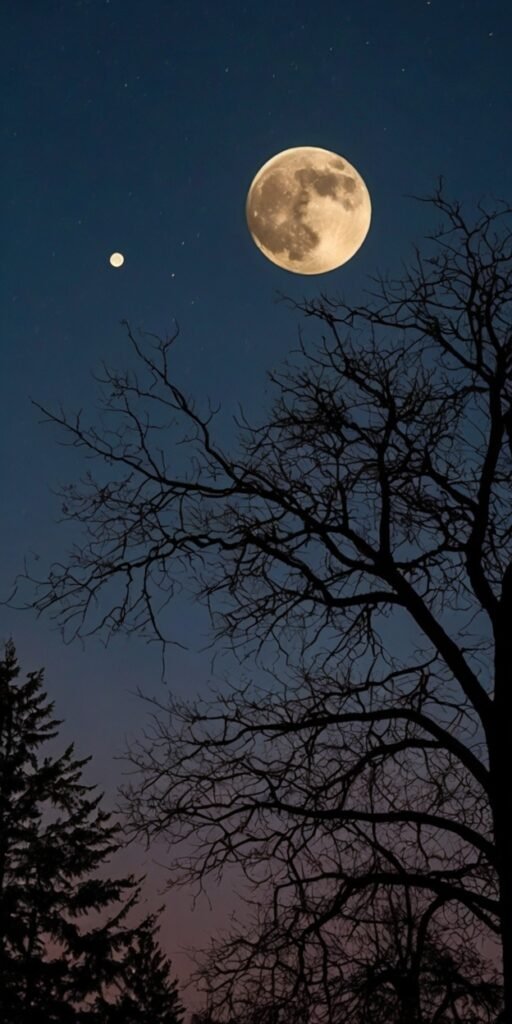
Experiencing the Full Moon: Outdoor Activities
The full moon has long captivated individuals and cultures across the globe, evoking a sense of wonder and tranquility. To fully appreciate the beauty and energy of a full moon, engaging in outdoor activities can significantly enhance the experience. Various options exist for those looking to immerse themselves in nature under the luminous glow of the moon.
One of the most rewarding activities is going on a night hike. This adventure allows participants to explore familiar terrains in a completely different light—literally. With the moon illuminating pathways, hikers can witness the intricate play of shadows and light, enhancing their connection to the natural surroundings. The sounds of nocturnal wildlife and the crisp night air add to this sensory experience, creating a profound appreciation for the nocturnal world.
Camping during a full moon provides a unique opportunity to observe its majestic rise and fall. Setting up a campsite amidst trees or near a body of water can multiply the experience, as the reflection of the full moon adds a mesmerizing charm to the ambiance. Cooking meals over a campfire while surrounded by the glowing orb in the sky fosters a sense of unity with nature, allowing individuals to savor the moments shared with friends or family.



Another delightful way to experience the full moon is through moonlight picnics. Preparing a simple meal or bite-sized treats and laying them out under the celestial display creates an atmosphere imbued with tranquility and romance. This activity not only nourishes the body but also nourishes the spirit, as the gentle moonlight casts a serene glow on the setting, making the experience memorable.
Incorporating outdoor activities during a full moon serves to enrich the overall experience by strengthening connections with nature and oneself. Each of these suggested activities offers a unique way to celebrate the alluring aesthetics of the full moon while fostering an appreciation for the beauty of the natural world. Embracing these moments can lead to lasting memories and a deeper connection to the cycles of nature.
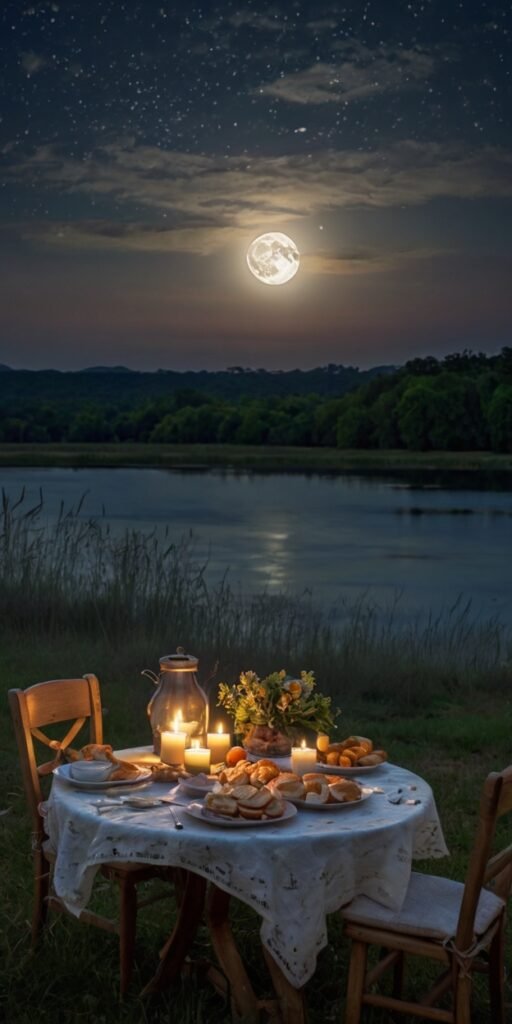
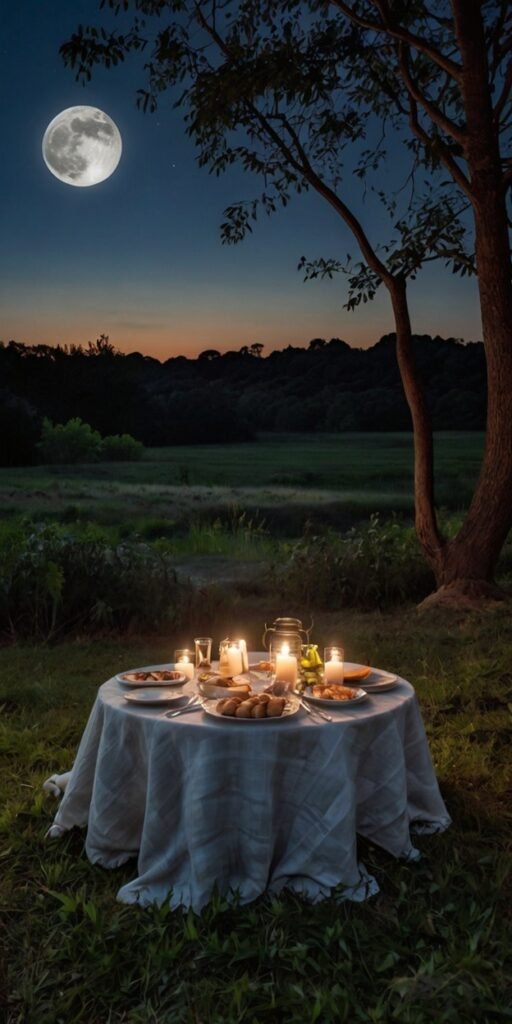
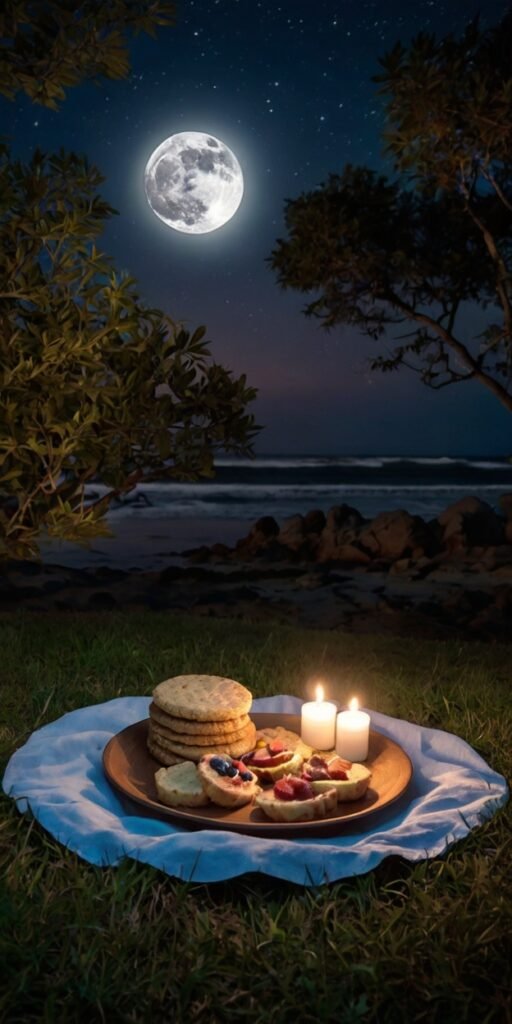
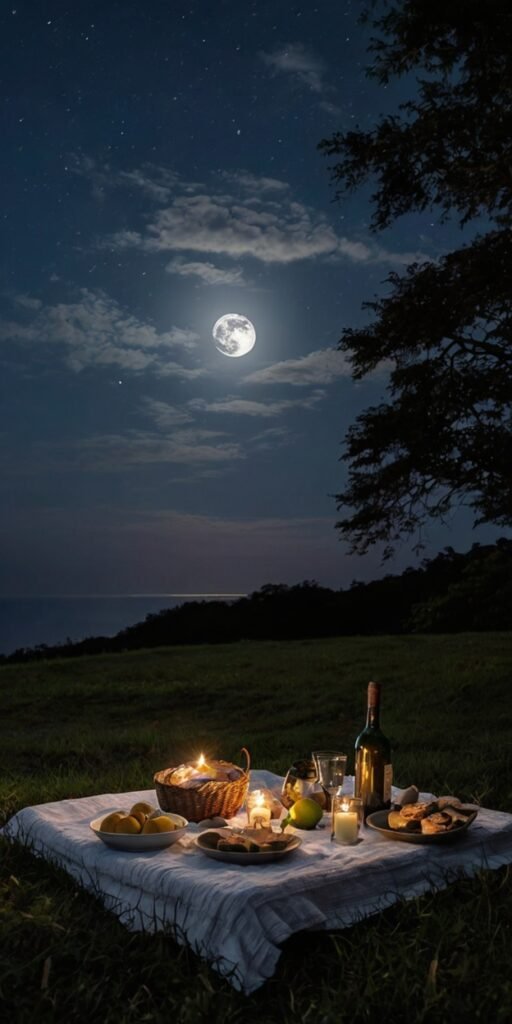
Scientific Perspective: The Physics of the Full Moon
The full moon represents a unique configuration of celestial bodies, where the Earth, Moon, and Sun align in a specific manner. This alignment occurs approximately once every 29.5 days, known as the lunar cycle. During this phase, the illuminated side of the Moon faces directly toward the Earth, allowing it to appear particularly bright and prominent against the night sky.
The position of the Moon relative to the Earth and the Sun is crucial in determining the visual phenomena associated with the full moon. When viewed from Earth, the full moon emits light primarily due to sunlight reflected off its surface. The angle and position of the Sun not only influence the intensity of light but also create intriguing shadow patterns on the lunar surface, contributing to its aesthetic allure. This geometric relationship is governed by the principles of spherical bodies and light reflection, both of which are essential concepts in physics.

Conclusion: The Lasting Impression of the Full Moon
The full moon has long captivated the imaginations of individuals and cultures across the globe, standing as a symbol of beauty, mystery, and inspiration. Throughout history, the full moon has served not only as a fixture in the night sky but also as a powerful force influencing art, literature, and spiritual beliefs. Its luminous glow casts a spell on landscapes, transforming familiar surroundings into an ethereal realm that evokes a profound sense of wonder. This transition, from the mundane to the magical, underscores the multifaceted beauty of the full moon.
Furthermore, the emotional impact of the full moon extends beyond mere aesthetic pleasure. Many experience heightened feelings of introspection and reflection during this phase, prompting a connection with nature and the cosmos. People around the world often gather to witness this luminescent spectacle, forming communal bonds that enrich personal experiences. This shared appreciation fosters an environment of unity, promoting a deeper understanding of cultural and spiritual connections tied to the lunar cycle.
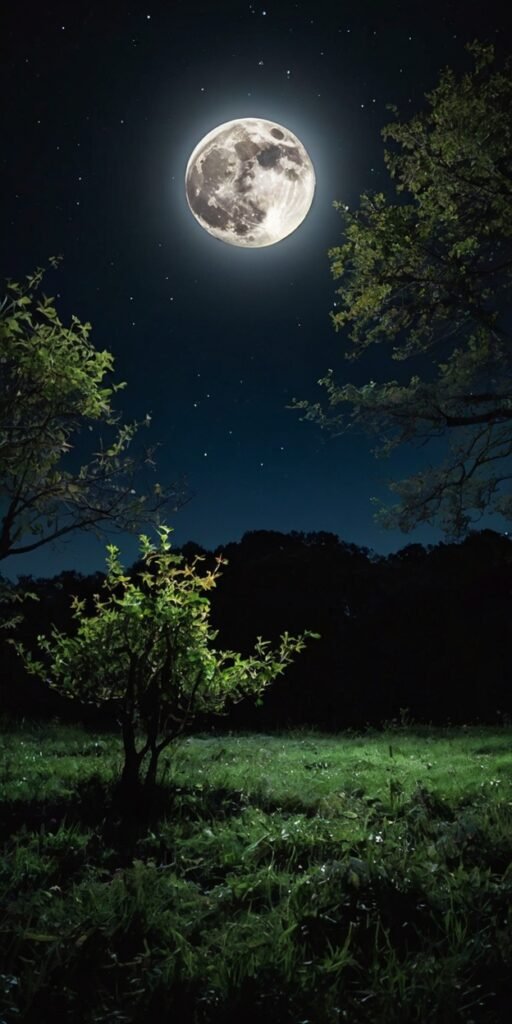



The rhythmic dance of the moon phases, culminating in the exquisite fullness, serves as a reminder of the natural world’s cycles and the beauty in change. As the full moon rises, it unleashes feelings of hope, serenity, and even nostalgia. It often inspires creativity, prompting artists and writers to channel their emotions into meaningful work. By immersing ourselves in the serene elegance of the full moon, we not only embrace its visual beauty but also its ability to touch hearts and minds, inviting introspection and a sense of belonging.
In conclusion, the full moon leaves an indelible mark on those who take a moment to appreciate its celestial glory. Its presence continues to inspire awe, reflection, and a deep appreciation for the wonders of the night sky, affirming the enduring allure of this remarkable celestial event.



RELATED POSTS
View all
